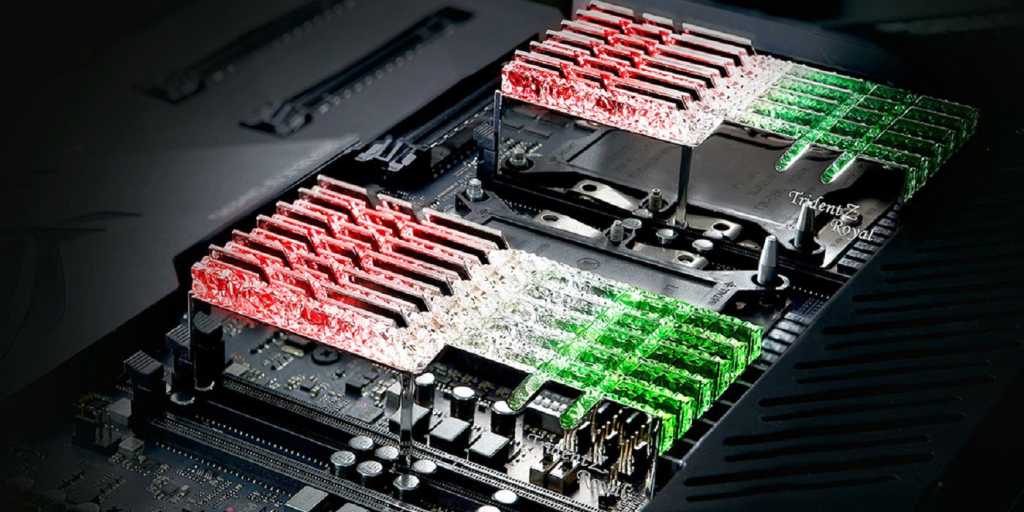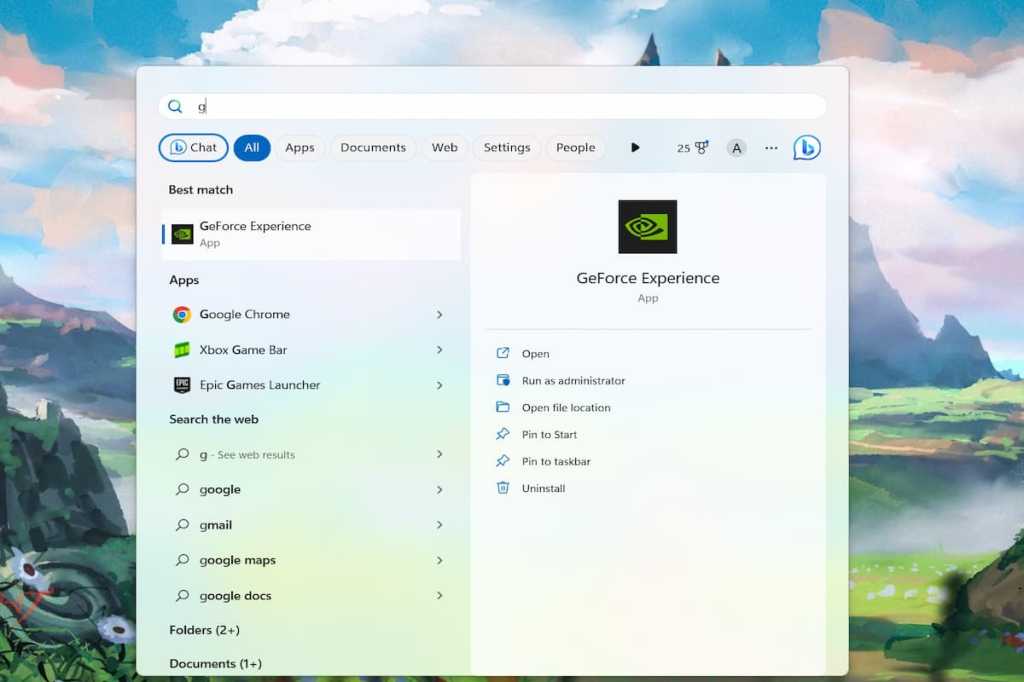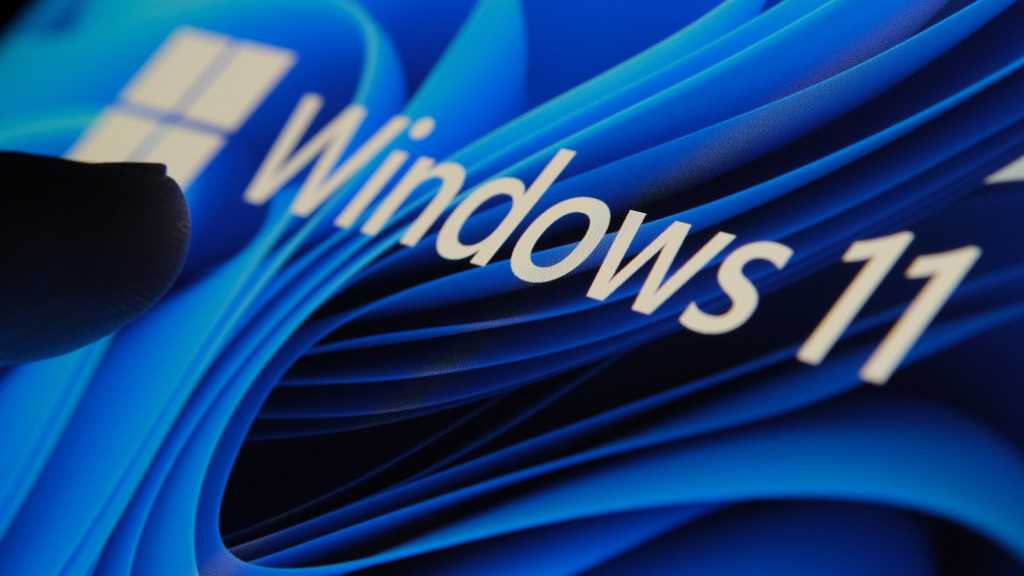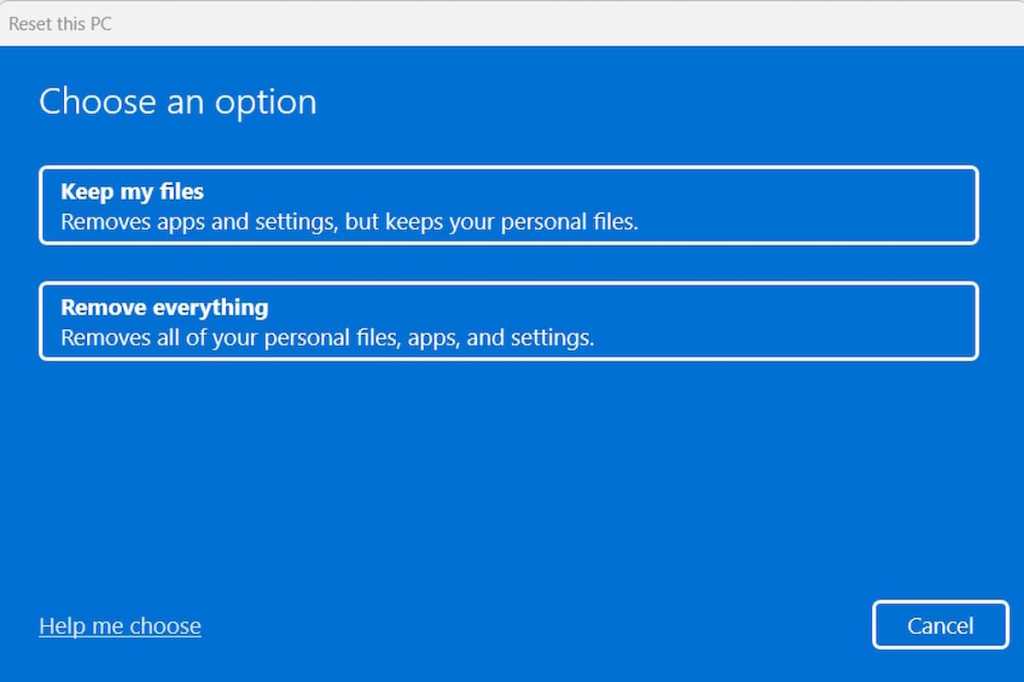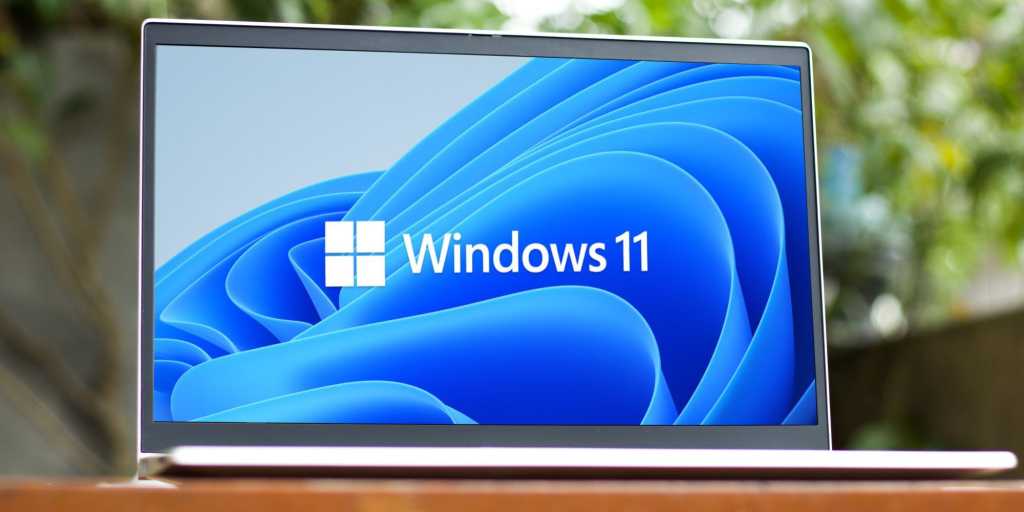Modern CPUs from both AMD and Intel support impressively fast RAM speeds: up to 3200MHz for DDR4 and a staggering 5600MHz for DDR5. Even higher frequencies are achievable with specialized profiles that fine-tune RAM control. However, unlocking these speeds requires tweaking BIOS settings or manual overclocking. This article explores the impact of RAM speed and latency on gaming performance.
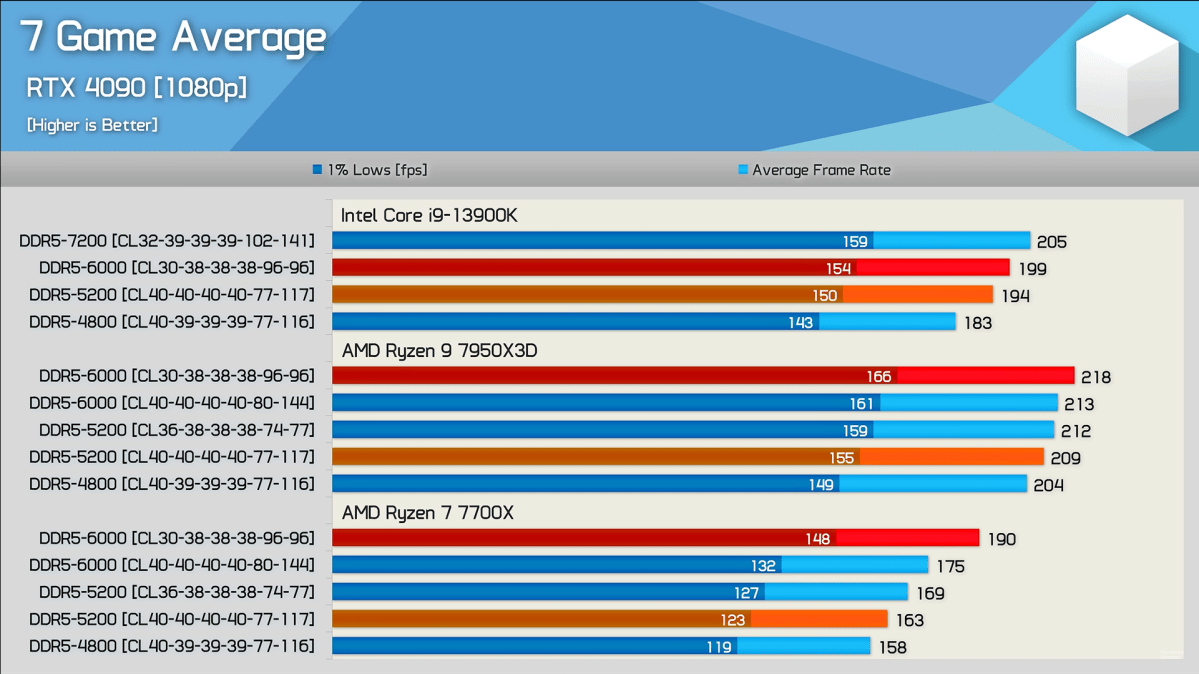 DDR5 RAM-Geschwindigkeiten im Vergleich – Hardware Unboxed Hardware Unboxed
DDR5 RAM-Geschwindigkeiten im Vergleich – Hardware Unboxed Hardware Unboxed
Determining Maximum Supported RAM Speed
Manufacturers often cite different maximum RAM speeds for processors and motherboards. JEDEC, the semiconductor standardization organization, sets specifications for RAM, including memory clock and voltage, to ensure long-term stability. CPU developers adhere to these guidelines for optimal reliability. The table below outlines supported RAM speeds for recent AMD and Intel CPU generations according to manufacturer specifications.
| CPU Socket | Processor Type | Supported RAM Clock |
|---|---|---|
| Intel 1700 | Core i5/i7/i9-13000 | 3200 MHz DDR4, 5600 MHz DDR5 |
| Intel 1700 | Core i3/i5/i7/i9-12000, Pentium Gold, Celeron, Core i3/i5-13000 | 3200 MHz DDR4, 4800 MHz DDR5 |
| Intel 1200 | Core i5/i7/i9-11000 | 3200 MHz |
| Intel 1200 | Core i7/i9-10000 | 2933 MHz |
| Intel 1200 | Core i3/i5-10000, Pentium Gold, Celeron G | 2666 MHz |
| Intel 4677 | Xeon w-3400, Xeon w-2400 | 4800 MHz DDR5 |
| Intel 2066 | Core i9-10000 | 2933 MHz |
| AMD AM5 | Ryzen 5/7/9 | 5200 MHz DDR5 |
| AMD AM4 | Ryzen 3/5/7/9 3000, Ryzen 3/5/7 4000, Ryzen 5/7/9 5000 | 3200 MHz |
| AMD AM4 | Ryzen 3/5/7 2000, Ryzen 3/5 3000G | 2933 MHz |
| AMD AM4 | Ryzen 3/5/7 1000, Athlon | 2666 MHz |
| AMD AM4 | A-9000 | 2400 MHz |
| AMD sWRX8 | Ryzen Threadripper PRO 3000, Ryzen Threadripper PRO 5000 | 3200 MHz |
| AMD sTRX4 | Ryzen Threadripper 3000 | 3200 MHz |
Many motherboards support RAM speeds exceeding these values. Utilizing “XMP” (Extreme Memory Profile) for Intel or “EXPO” (Extended Profiles for Overclocking) for AMD is the simplest way to achieve higher clock speeds. These profiles, defined by memory and motherboard manufacturers, allow for increased RAM speeds, often coupled with higher voltage. While manufacturers rigorously test these profiles, compatibility and stability aren’t guaranteed. Activating such profiles isn’t recommended for 24/7 PC operation. (Note: AMD AM4 motherboards often use “D.O.C.P.” (Direct Over Clock Profile) for DDR4 modules instead of XMP.)
For maximum data throughput, consider the motherboard’s memory channel support. This indicates how many memory blocks the processor’s memory controller can address simultaneously. Dual-channel architecture is common, offering a significant performance boost with two RAM modules versus one.
RAM: Frequency and Latencies Explained
RAM (Random Access Memory) acts as your PC’s short-term memory, temporarily storing data and commands required by the CPU. It provides significantly faster access times and higher transfer rates than storage drives like HDDs or SSDs.
A RAM module comprises multiple memory chips containing millions of capacitors and transistors. Each memory cell represents one bit (1 or 0). Capacitors discharge, requiring constant refreshing, while transistors control the capacitor state.
Memory cells are arranged in a row-and-column grid, enabling precise addressing by the memory controller (hence “random access”). Accessing a cell involves several latency times, measured in clock cycles and dependent on memory frequency. These include tRCD (Row-to-Column Delay), CL (CAS Latency), tRAS (Active-to-Precharge Time), and tRP (Row Precharge Time). Calculating actual latency involves considering the effective clock frequency and the number of clock cycles for each latency parameter.
DDR (Double Data Rate) transfers data on both rising and falling clock edges, doubling data throughput. Burst mode further enhances throughput by reading or changing consecutive cells in a row. DDR4 RAM has eight data buffers (prefetch factor) for temporary storage of burst access data.
DDR4 modules have a 64-bit channel (72-bit with ECC), while DDR5 modules have two independent 32-bit channels (40-bit with ECC). DDR5 also doubles the burst length, improving efficiency and reducing data access latency.
DDR5: Performance Impact of XMP/EXPO in Games
High RAM speeds primarily benefit specific applications like file encryption, compression/decompression, and video editing, where sequential memory access leverages burst mode and data prefetching. However, low latency is more crucial than high clock speed when numerous commands with small data packets occur rapidly. In gaming, GPU performance is often the bottleneck. Faster RAM benefits mainly arise when the CPU is the limiting factor.
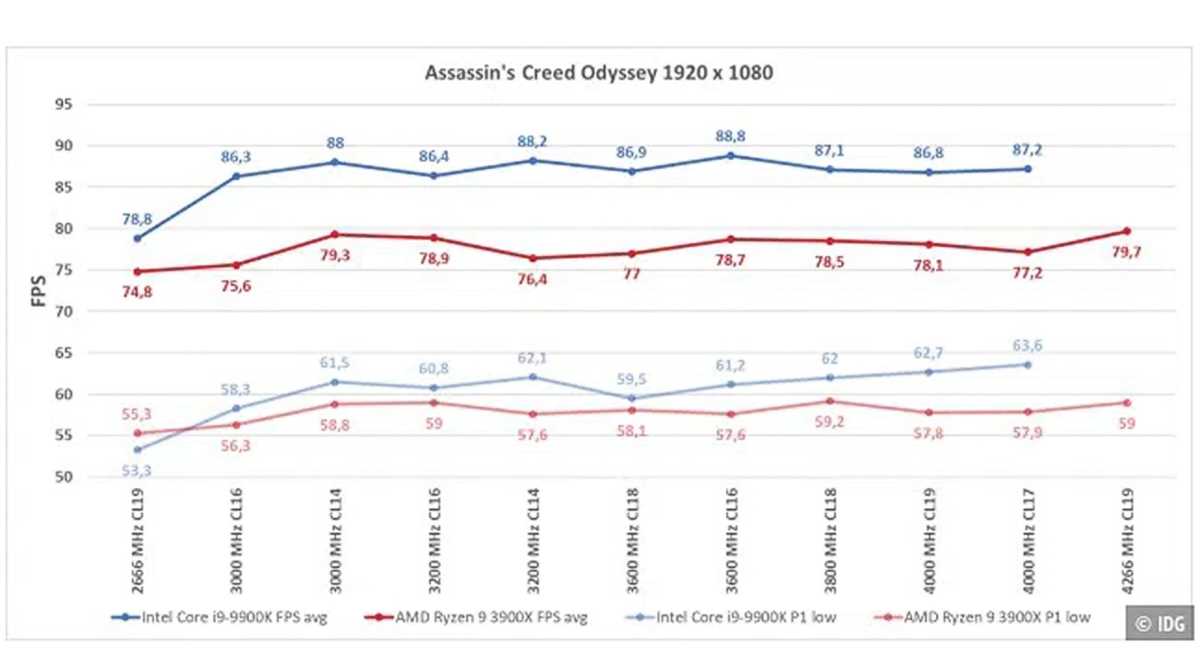 Assassins Creed Odyssey RAM-Test IDG
Assassins Creed Odyssey RAM-Test IDG
Hardware Unboxed analyzed the impact of faster DDR5 RAM in various games using a Core i9-13900K, Ryzen 7 7700X, and Ryzen 7 7950X3D, paired with an RTX 4090 at 1080p resolution to emphasize CPU limitations.
Performance gains varied significantly between games. While some games showed substantial improvements with faster RAM, others exhibited minimal changes. The weakest CPU generally benefited most from increased RAM speed. The Ryzen 9 7950X3D and Core i9-13900K, often GPU-limited, showed smaller performance differences. The larger L3 cache of the X3D processor also reduced main memory access.
DDR4: Performance Impact of XMP/D.O.C.P. in Games
Previous DDR4 RAM tests revealed a similar pattern. Games with GPU limitations showed minimal benefit from faster RAM, while others demonstrated noticeable improvements, especially with optimized latencies. However, excessively high RAM clocks on AMD platforms could negatively impact performance due to changes in the ratio between RAM, memory controller, and Infinity Fabric speeds.
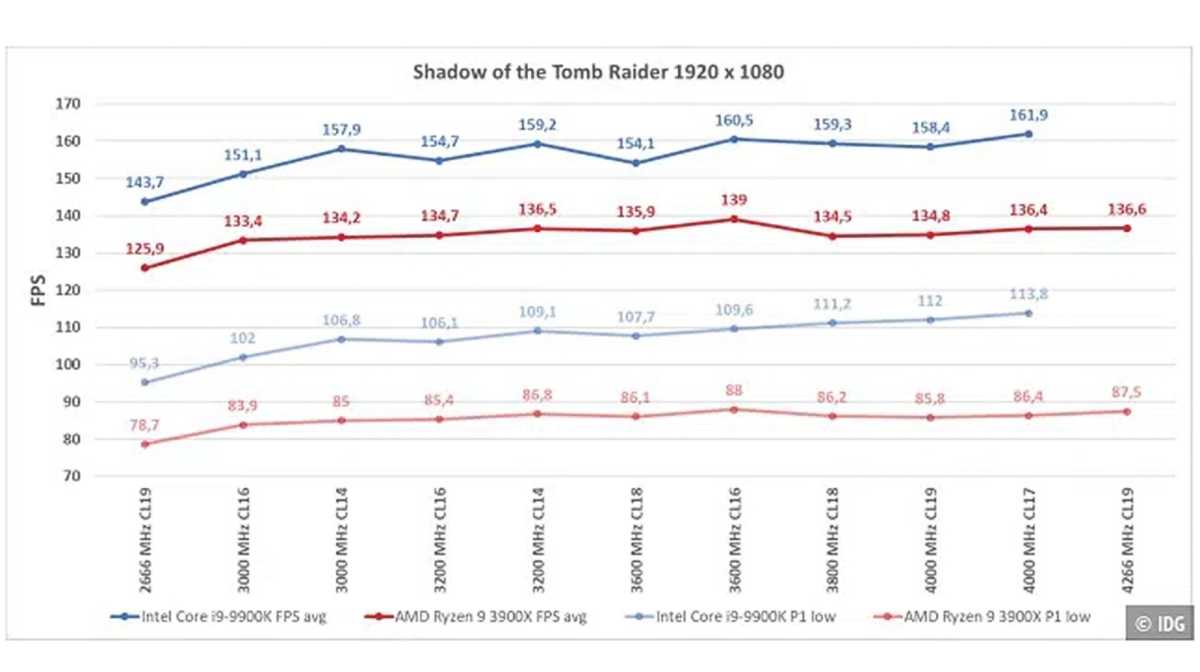 Shadow of the Tomb Raider RAM-Test IDG
Shadow of the Tomb Raider RAM-Test IDG
DDR4 vs. DDR5 with Core i9-12900K
The choice between DDR4 and DDR5 is relevant for 12th and 13th generation Intel Core processors. Tests with a Core i9-12900K across various games showed measurable but not substantial differences between DDR4 and DDR5, though newer DDR5 modules offer significantly improved timings.
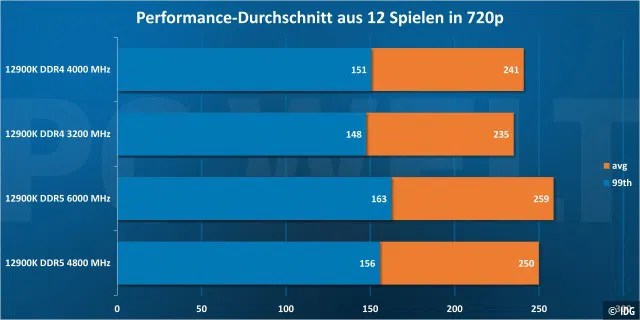 12900K DDR4 vs DDR5 – 720p Sebastian Schenzinger
12900K DDR4 vs DDR5 – 720p Sebastian Schenzinger
Checking and Changing RAM Speed in BIOS
Checking current RAM speed is simple using Windows Task Manager. Activating XMP/EXPO/D.O.C.P. involves accessing the BIOS during startup and enabling the appropriate memory profile. Confirm the changes and restart the PC. If these options aren’t available in the BIOS, your RAM or motherboard doesn’t support the feature.
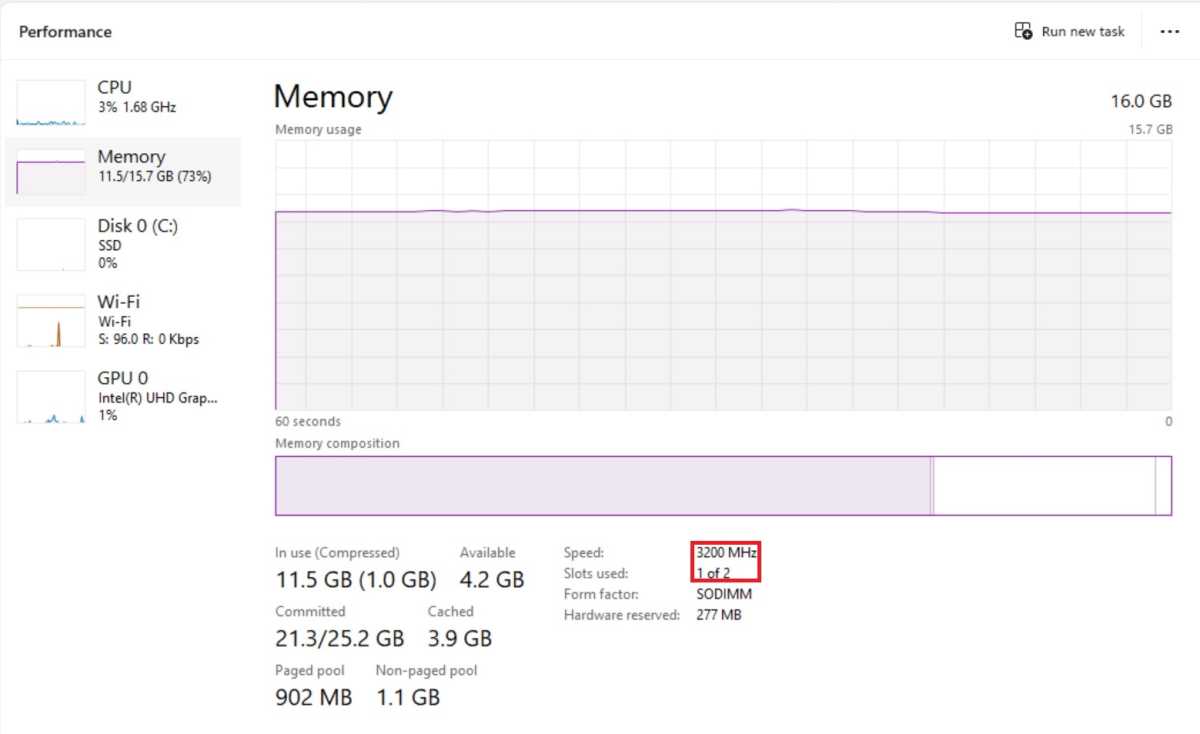 task manager memory
task manager memory



